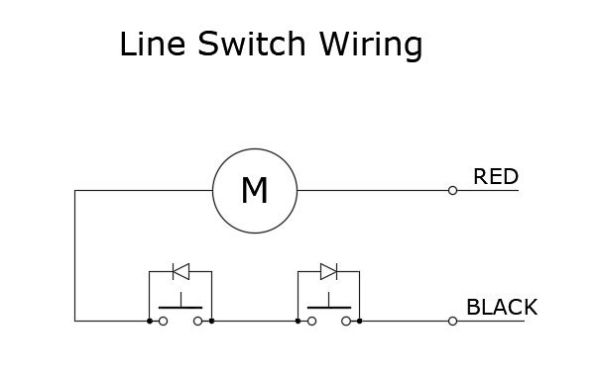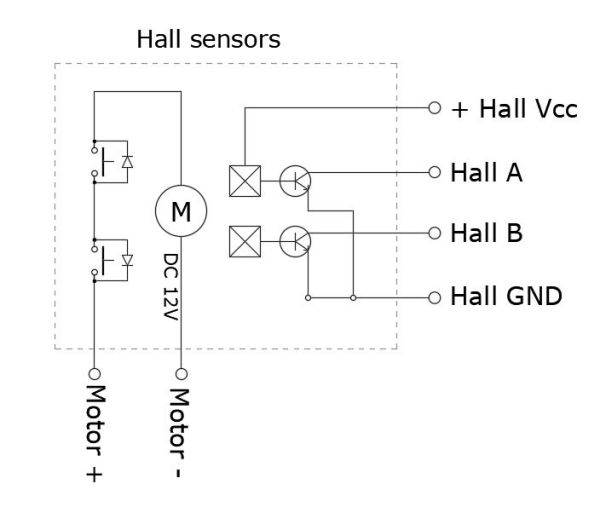Actuator without limit switch

Actuator without limit switch linear actuator motor only In this configuration the actuator has no limit switch device, so at the output we only have the two DC motor power cables.
Pay attention that using the linear actuator without any device that controls its stroke can be very dangerous, and very easy for the actuator to go into mechanical stop, which means that the rod reaches the limit of the stroke (fully open or fully closed ) and the motor continues to work, after a while the motor burns out or the gears break.
Actuator with limit switch only wired with diodes

The simplest way to use the actuator with 2 positions, all open and all closed.
The limit switch wiring turns off, interrupts the power supply to the motor, and this stops.
Attention the actuator will always be powered by current.
To reverse the gear, simply reverse the polarity.
Actuator with Encoder

In this configuration, however, the actuator has no limit switches, but only has the motor power supply wires and the encoder wires. (usually with 2 channels 4 pulses per revolution)
The encoder is a device that generates 4 pulses every motor revolution, in this way you can always know the position of the rod.
With this system, however, if, for example, the current fails, the rod position is lost, a limit switch and other sensor must be inserted on the application as a “0″ point.
Actuator with wired limit switch and encoder

Thanks to the wiring of the microswitch limit switches with diodes, you can use the encoder without having to worry about whether the actuator will stop or not.
The limit switch wiring with diodes allows you to use the actuator in complete safety, the actuator once reached the limit travel (all open / all closed) turns off, ie the microswitch cuts off the power supply to the motor. Attention the actuator will always be powered by current.
Post time: Aug-17-2022
